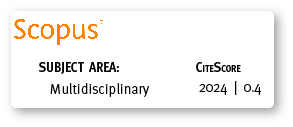Posibilidades de la reconstrucción tridimensional de zonas patrimoniales en base a fotogrametría y escáner LIDAR. El Barranco de la ciudad de Cuenca como caso de estudio
DOI:
https://doi.org/10.18537/mskn.08.02.07Palabras clave:
fotogrametría digital, reconstrucción tridimensional, patrimonio edificado, transformaciones urbano-morfológicas, nubes de puntosResumen
La emergente necesidad de información actualizada, junto a la falta de documentación adecuada de sectores históricos de ciudad, además del desarrollo tecnológico acelerado de la época, ha provocado la creación de diversas herramientas para el levantamiento de información geográfica, topográfica, y arqueológica, que pueden contribuir al estudio de las transformaciones urbano-morfológicas y a la documentación y protección del patrimonio edificado. Con estos antecedentes, este estudio pretende validar una metodología para la identificación y análisis de alteraciones arquitectónicas como urbanas, en el campo del patrimonio edificado. Para esto, se llevó a cabo un levantamiento detallado mediante fotogrametría aérea y terrestre, en base al uso de herramientas que generan datos bidimensionales como son el Drone DJI Phantom 4, Cámara Nikon D5300, Cámara GoPro Hero 3 Black Edition y un Smartphone Iphone 7. De igual forma, este estudio se complementó con un levantamiento tridimensional mediante escáner láser LIDAR. Los datos se obtuvieron en base a vuelos ortogonales con dron, los cuales se complementaron, mediante documentación parcial de fachadas de las edificaciones del El Barranco de Cuenca en Ecuador, con las otras herramientas bidimensionales y tridimensionales antes descritas. Este proceso se llevó a cabo en dos ocasiones, con un lapso de 4 meses entre sí, con el fin de identificar posibles cambios. Al completar el procesamiento de los datos, se encontraron dos casos en donde las edificaciones fueron alteradas en diferente magnitud. Además, se estableció la versatilidad de los instrumentos utilizados para la reconstrucción tridimensional de nubes de puntos en nuestro medio. En este sentido, el escáner láser LIDAR fue la herramienta que brindó mejores resultados, sin embargo, el levantamiento tomó más tiempo y fue más costoso; por otro lado, considerando la relación calidad-precio, el drone DJI Phantom 4 resultó ser el artefacto más recomendable para este tipo de estudios.
Descargas
Métricas
Citas
Agisoft LLC. (2016). Agisoft PhotoScan user manual professional edition, Version 1.2, 103 pp. Disponible en http://www.agisoft.com/pdf/photoscan-pro_1_2_en.pdf
Bacigalupo, C., Cessari, L. (2003). Survey techniques and virtual reality for the recovery plan. The International Archives of the Photogrammetry, Remote Sensing and Spatial Information Sciences, XXXIV(Part 5/W12), 40-42.
Borrero Vega, A. L. (2006). Cambios históricos en el paisaje de Cuenca, Siglos XIX-XX. Procesos Revista Ecuatoriana de Historia, 24(II Semestre, 2006), 107-134.
Cámara, L., Latorre, P. (2003). El modelo analítico tridimensional obtenido por fotogrametría. Descomposición, manipulación y aplicaciones en el campo de la restauración arquitectónica. Arqueología de la Arquitectura, 2, 87-96.
CloudCompare. (2015). CloudCompare, Version 2.6.1. User manual. Disponible en http://www.cloudcompare.org/doc/qCC/CloudCompare%20v2.6.1%20-%20User%20manual.pdf, 181 pp.
Doherty, M., Nakanishi, H., Bai, X., Meyers, J. (2009). Relationships between form, morphology, density and energy. GEA Background Paper, 1-28. Disponible en http://www.iiasa.ac.at/web/ home/research/Flagship-Projects/Global-Energy-Assessment/GEA_Energy_Density_ Working_Paper_031009.pdf
El-Hakim, S., Whiting, E., Gonzo, L., Girardi, S. (2005). 3D Reconstruction of complex architectures from multiple data. ISPRS Int. Workshop on 3D Virtual Reconstruction and Visualization of Complex Architectures (3D-Arch’2005), Venice-Mestre, Italy, 9 pp.
Ervine, L. S. (2016). Point clouds as a representative and performative format for landscape architecture. A case study of the Ciliwung River in Jakarta, Indonesia. Dissertation doctoral, ETH-Zürich, Suisa, Nr. 23299, 184 pp. https://doi.org/10.3929/ethz-a-010638407
Grussenmeyer, P., Patias, P., Hanke, K. (2008). Applications in cultural heritage documentation. In: ISPRS Congress Book, Baltsavias, E., Li, Z., & Chen, J. (Eds.). CRC Press, pp. 363-383, https://doi.org/10.1201/9780203888445.ch27
Guerrero, J., Pajares, G., Guijarro, M. (2011). Técnicas de procesamiento de imágenes Estereoscópicas, 21 pp. Departamento de Ingeniería del Software e Inteligencia Artificial, Universidad Complutense de Madrid. Disponible en https://www.researchgate.net/ publication/47640074p
Guidi, G., Russo, M., (2011). Diachronic 3D reconstruction for lost cultural heritage. International Archives of the Photogrammetry, Remote Sensing and Spatial Information Sciences, XXXVII(5/W16), 371-376.
Jáuregui, L. (2001). Fotogrametría básica. Disponible en https://www.scribd.com/document/ 300706892/Fotogrametria-Basica-Luis-Jauregui, 171 pp.
Patias, P. (2006). Cultural heritage documentation. International Summer School: Digital Recording and 3D Modeling. Aghios Nikolaos, Crete, Greece. 21 pp. Disponible en https://pdfs.semanticscholar.org/cddb/9d9dec8d69cc25668f01c7d2c0f910220477.pdf
Perera, S. (2015). La ciudad entendida como un organismo vivo. Madrid, España: Universidad Francisco de Vitoria, 51 pp. Disponible en http://ddfv.ufv.es/bitstream/handle/10641/ 1148/SERGIO_PERERA_CONCEPCION_ENSAYO.pdf?sequence=1
Querol, M. Á. (2010). Manual de gestión del patrimonio cultural. Madrid, España: AKAL, 544 pp.
Remondino, F., Barazzetti, L., Nex, F., Scaioni, M., Sarazzi, D. (2011). UAV photogrammetry for mapping and 3D modeling - Current status and future perspectives. International Archives of Photogrammetry, Remote Sensing and Spatial Information Sciences, XXXVIII-1(C22), 25-31.
Samper, P. G. (2003). El sentido urbano del espacio público. Bitácora, 1(7), 13-18.
Vidanovski, M. (2016). Autodesk Community. ReCap Forum. Disponible en https://forums.autodesk.com/t5/ realitycomputing/what-makes-photos-good-for-photogrammetry-how-to-take-the-best/ba-p/5738392
Descargas
Publicado
Cómo citar
Número
Sección
Licencia
Copyright © Autors. Creative Commons Attribution 4.0 License para cualquier artículo enviado a partir del 6 de junio de 2017. Para los manuscritos presentados anteriormente, se utilizó la licencia CC BY 3.0.
![]()
Usted es libre de:
 |
Compartir — compartir y redistribuir el material publicado en cualquier medio o formato. |
 |
Adaptar — combinar, transformar y construir sobre el material para cualquier propósito, incluso comercialmente. |
Bajo las siguientes condiciones:
 |
Atribución — Debe otorgar el crédito correspondiente, proporcionar un enlace a la licencia e indicar si se realizaron cambios. Puede hacerlo de cualquier manera razonable, pero de ninguna manera que sugiera que el licenciador lo respalda a usted o a su uso. |
| Sin restricciones adicionales: no puede aplicar términos legales o medidas tecnológicas que restrinjan legalmente a otros a hacer cualquier cosa que permita la licencia. |
Mayor información sobre este acuerdo de autoría y licencia, transferencia de derechos o solicitudes de reproducción, pueden ser consultados en este enlace.









